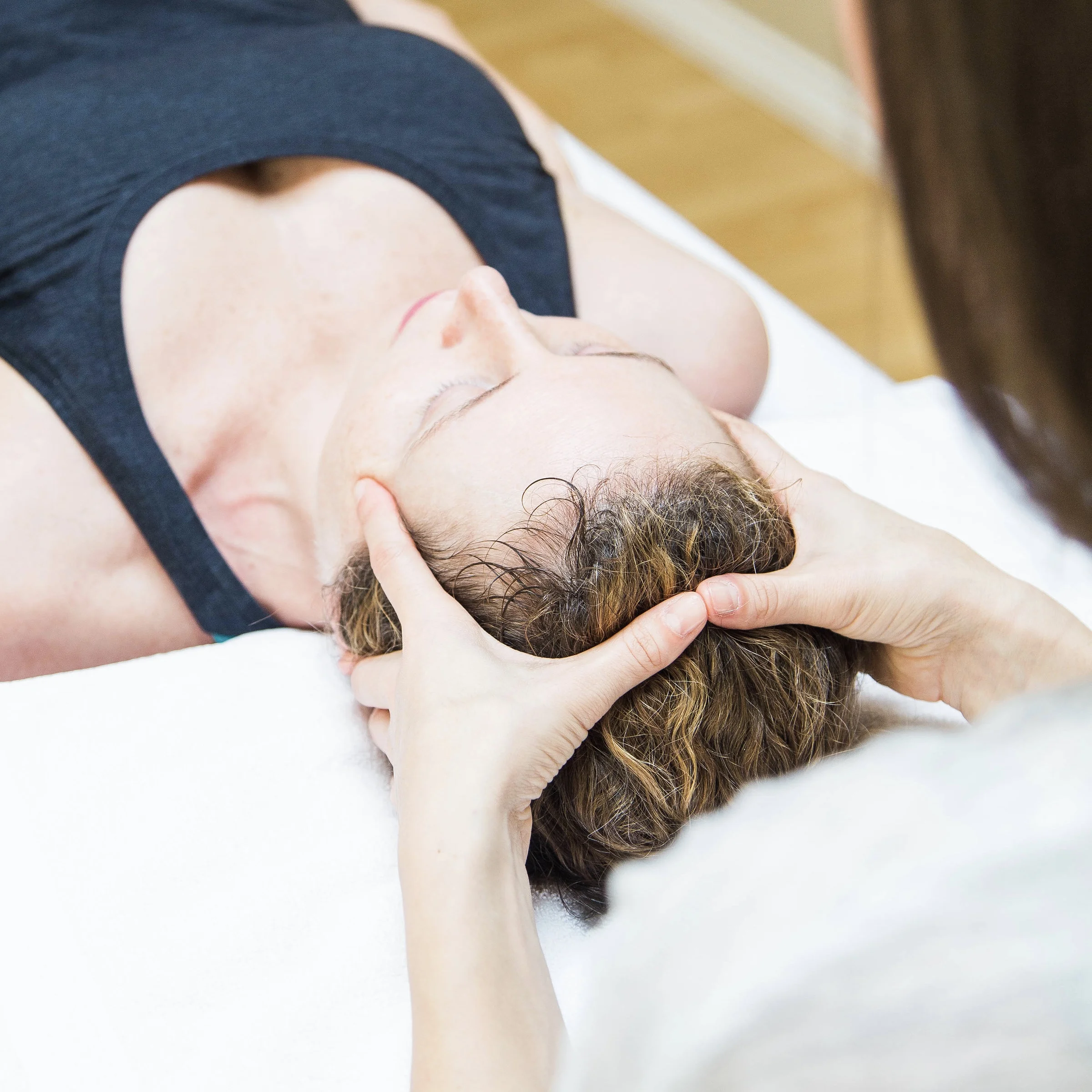What is Craniosacral Therapy?
Cranial Osteopathy (also called cranial therapy or craniosacral therapy) is one variety of osteopathic manipulative therapies.
Your craniosacral system runs from your cranium (your skull, face and mouth) down to your sacrum, or tailbone area, and it is made up of the membranes and cerebrospinal fluid that surround and protect your brain and spinal cord. If you develop restrictions in the membranes of this system, it can change the flow of the fluid and directly affect all aspects of your central nervous system.
How does it work?
Osteopathy works under the premise that the cranium, as well as all the other tissues and systems of the body, are in a constant motion. This motion is the Primary Respiratory Mechanism (PRM), an idea that originated with Osteopathy. The motion is imparted to all living tissues as a “micro-mobility” termed motility, which is expressed at a frequency that is detectable by the human hand through precise and experienced palpation. This motility is the focus of much scientific research.
The cranial touch focuses on restoration of the inherent motility of PRM. This application is not restricted to the cranium. It may also be applied to any other tissue or system of body, because this motility is expressed everywhere in the body. Depending upon the health and condition of the tissues under evaluation, the motility can be detected in varying degrees of normality by the palpating Osteopathic Manual Practitioner. Treatment is aimed at restoring the optimal rhythms of the patient's PRM.
What type of conditions would CST be helpful for?
Migraines and headaches
Chronic neck and back pain
Motor-coordination impairments, such as the effects of stroke
Closed-head, brain and spinal cord injuries
Chronic fatigue
Fibromyalgia
TMJ Syndrome
Scoliosis
Tinnitus, hearing loss and vertigo
Learning disorders
Stress disorders and insomnia
Infant colic

